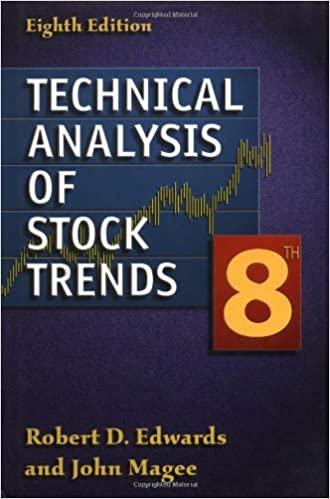Question
The risk-free rate of return is 3 percent, and the expected return on the market is 7.5 percent. Stock A has a beta coefficient of
The risk-free rate of return is 3 percent, and the expected return on the market is 7.5 percent. Stock A has a beta coefficient of 1.4, an earnings and dividend growth rate of 4 percent, and a current dividend of $3.10 a share. Do not round intermediate calculations. Round your answers to the nearest cent.
- What should be the market price of the stock? =
- If the current market price of the stock is $44.00, what should you do? = (Should or should not be purchased)
- If the expected return on the market rises to 11.8 percent and the other variables remain constant, what will be the value of the stock? =
- If the risk-free return rises to 5 percent and the return on the market rises to 12.2 percent, what will be the value of the stock? =
- If the beta coefficient falls to 1.2 and the other variables remain constant, what will be the value of the stock? =
- Explain why the stocks value changes in c through e.
The increase in the return on the market (increases/decreases) the required return and (increases/decreases) the value of the stock.
The increase in the risk-free rate and the simultaneous increase in the return on the market cause the value of the stock to (increase/decrease)
The decrease in the beta coefficient causes the firm to become (less/more) risky as measured by beta, which (increases/decreases) the value of the stock
Step by Step Solution
There are 3 Steps involved in it
Step: 1

Get Instant Access to Expert-Tailored Solutions
See step-by-step solutions with expert insights and AI powered tools for academic success
Step: 2

Step: 3

Ace Your Homework with AI
Get the answers you need in no time with our AI-driven, step-by-step assistance
Get Started


